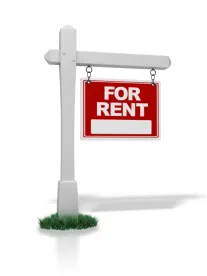On April 3, 2019, the IRS published Rev. Proc. 2019-17, which provides that multifamily housing projects (or, for those of you who prefer Grey Poupon, “qualified residential rental projects”) won’t violate the general public use requirement even if the landlord offers units of the project to certain specific groups. Congress had made this point clear for low-income housing tax credits (“LIHTC”), which are often used in connection with tax-exempt multifamily housing bonds. Multifamily housing bonds have their own, separate general public use requirement, and there wasn’t a similar provision allowing group preferences in those rules. This disconnect had stopped many of these deals cold. Rev. Proc. 2019-17 puts the two sets of rules in sync.
Under section 103 of the Code, a state or local government can issue tax-exempt bonds to finance certain types of privately-used “exempt facility” projects. The list of exempt facilities includes a qualified residential rental project as defined in section 142(d). A multifamily housing project must serve individuals with qualifying (i.e., “sufficiently low”) incomes to be eligible for bond financing.[1] In addition, a multifamily housing project “must serve or be available on a regular basis for general public use.” For example, an example in the Treasury Regulations (1.103-8(b)(9), Example 2) provides that a multifamily housing project that is financed with tax-exempt bonds in which the landlord gives a preference to employees of a factory adjacent to the housing project doesn’t meet the multifamily housing bond general public use requirement. Significant ambiguity surrounded whether a particular group preference was too specific, like the “factory employees” grouping described above, or whether it was general enough to meet the multifamily housing bond general public use requirement.
The ambiguity has been accentuated because of the conflict with the LIHTC rules in section 42, which have their own general public use requirement. A LIHTC in the amount of 4% or 9% of the cost of a project is available to the project owner of a qualified low-income building, but a general public use requirement also applies for LIHTC. Thus, an owner of a qualified low-income building will not receive a LIHTC if the building is not available on a regular basis for general public use. Distinct from section 142, section 42(g)(9) provides that a project does not fail to meet the general public use requirement solely because of occupancy restrictions or preferences that favor tenants:
(1) with special needs,
(2) who are members of a specified group under a Federal or State program or policy that supports housing for such a specified group, or
(3) who are involved in artistic or literary activities.
Military veterans, farm workers, first responders, teachers, low-income parents attending college, pregnant or parenting teens, and domestic abuse victims were mentioned during floor debates regarding the enactment of Section 42(g)(9) as groups that were intended to be among the preferential tenants.[2]
What does this all mean? It means that an owner of a low-income building can set aside units for certain groups while still meeting the general public use requirement and receiving a LIHTC.
More frequently than not, tax-exempt bonds and LIHTC are used in tandem to finance a multifamily housing project. For a multifamily housing project to qualify for the 4% LIHTC, a portion of the project must be financed with tax-exempt bonds. Tax-exempt bonds under section 142 are most commonly used to finance a multifamily housing project. Under section 142, however, there is not a provision or explanation that the preferences or restrictions in section 42(g)(9) may also apply to section 142. This has left many multifamily housing projects across the country abandoned, delayed or downsized because of the uncertainty of providing certain housing for groups like military veterans.
The National Association of Bond Lawyers (“NABL”) and other industry groups took quick action. In December of 2018, NABL sent a letter to various federal officials, predominately at the Treasury Department and the Internal Revenue Service, requesting guidance that would allow the permitted LIHTC group preferences to also apply for tax-exempt bond purposes. The NABL letter reiterated that, without clarification, the 4% LIHTC would be unavailable for affordable multifamily housing facilities with group preferences. The letter requested action be taken through either legislation, a technical correction or guidance published by either the Treasury Department or IRS.
Six US Senators also wanted clarity on this issue. On March 15, 2019, the Senators sent a letter to the Commissioner of the IRS urging the IRS to consider “expeditiously issuing a notice” clarifying that affordable housing projects that comply with LIHTC general public use requirements are also eligible to be financed with tax-exempt bonds.
The IRS responded to both requests by issuing Rev. Proc. 2019-17, which states that a multifamily housing project, as defined in section 142(d) does not fail to meet the general public use requirement applicable to exempt facilities solely because of occupancy restrictions or preferences that favor tenants in one of the three categories described in section 42(g)(9). The IRS specifically acknowledged housing preferences for military veterans as a permitted group preference.
The guidance does leave some questions unanswered (ain’t it always the truth?). The language of Rev. Proc. 2019-17 suggests (“for example . . .”) that military veterans are only one of the permitted groups preferred under the multifamily housing bond general public use rules. Does this mean that group preferences for farm workers, first responders, teachers, low-income parents attending college, pregnant or parenting teens, and domestic abuse victims are also allowed for multifamily housing bond purposes? This approach sounds reasonable given that Rev. Proc. 2019-17 seems to have been inspired by section 42(g)(9).
In addition, there is no administrative guidance or judicial interpretation of section 42(g)(9) yet, so this ambiguity will also spill over into the tax-exempt bond world. Thus, another open question is the contours of the “Federal or State program or policy that supports housing for such a specified group” – Rev. Proc. 2019-17 notes that there are such programs for military veterans, but does this open up the possibility that a State could draw up a program that is narrower than what Congress or Treasury might have wanted? Yet another open question involves our classic “rules of poker” situation. (Can a Revenue Procedure supersede Treasury Regulations? What if they’re Regulations that were promulgated under the version of the Internal Revenue Code enacted the year that Marilyn Monroe married Joe DiMaggio?) In other words, if section 42(g)(9) would allow it, are employee group preferences now permitted even if the example in 1.103-8 technically prohibits it? Finally, how broad is the definition of artistic and literary activities?
More to come, as always. For now, the IRS should be applauded for lining up these two sets of rules and rightfully getting the multifamily housing world back on track.
[1] Under section 142(d)(1), a project meets the qualifying income test if 20% of the residential units are occupied by individuals whose income is 50% or less of area media gross income or if 40% or more of the residential units in such project are occupied by individuals whose income is 60% or less of area median gross income.
[2] 154 Cong. Rec. S7620 (daily ed. July 29, 2009 (statement of Sen. Bingaman), available here.




 />i
/>i
